Chase strategy It uses capacity as the lever With this strategy, the production rate is synchronized with the demand rate by varying machine capacity or hiring and laying off employees as the demand rate varies In practice, achieving this synchronization can be problematic because of the difficulty of varying capacity and workforce on shortPure level strategies are concerned with maintaining workforce orIn order to use the level capacity strategy, variations in demand are met by A varying output during regular time without changing employment levels B varying output during regular time by changing employment levels C varying output by changing overtime levels D using combination of inventories, overtime, part time, and back orders

Aggregate Planning Planning Horizon Aggregate Planning Intermediate Range
Level capacity strategy vs chase demand strategy
Level capacity strategy vs chase demand strategy- Chase Demand Strategy Spring 80,000 80,000 80 0 Summer 50,000 50,000 50 0 30 Fall 1,000 1,000 1 70 0 Winter 150,000 150,000 150 30 0 100 50 SALES PRODUCTION WORKERS WORKERS WORKERS QUARTER FORECAST PLAN NEEDED HIRED FIRED Cost of Chase Demand Strategy (400,000 X $0) (100 x $100) (50 x $500) = $5,000 127 Briefly discuss the advantages and disadvantages of each of these planning strategies A Maintain a level rate of output and let inventories absorb fluctuations in demand Advantages of Level capacity Strategy are that costs are kept to a minimum in recruitment, training, overtime, and idle time This also includes lower instances of morale problems among employees and



2
In other words, Manager A is tied to the "chase demand" strategy, and his counterpart, Manager B in the adjacent office, is locked into the "level capacity" strategyThe Extremes Level Strategy Chase Strategy Production equals demand Production rate is constant Types of Aggregate Plans (Cont) • Hybrid Aggregate Plans – Uses a combination of options – Options should be limited to facilitate execution – May use a level workforce with overtime & temps – May allow inventory buildup and someChase Strategy Level Strategy Optimization Develop a production plan and calculate the annual cost for a firm whose demand forecast is fall, 10, 000;
The chase strategy is sometimes referred to as demand matching because the strategy varies production to meet demand Benefits The main benefits associated with a chase strategy are lower inventory levels (free capital resources) Reduced carrying costs ;Generally, these options fall into two "pure strategies which consist of the chase strategy and the level strategy Under the chase strategy, production is varied as demand varies With the level strategy, production remains at a constant level in spite of demand variations The chase strategy, when implemented properly provides a competitive Capacity strategy is an approach to increasing and decreasing business capacity to meet demand Capacity includes things like labor and equipment that can be scaled to increase business output The following are common types of capacity strategy
{ The Justintime production plan, also known as the chase plan, consists in changing the production rate to exactly satisfy demand The idea is consistent with the JIT production philosophy and results in low holding costs but may result in high cost of adjusting the production rate, ie, high flring and hiring costs or high idle times Alternative Capacity Management Strategies • Level capacity (fixed level at all times) • Stretch and shrink – offer inferior extra capacity at peaks (eg bus/metro standees) – vary seated space per customer (eg elbow room, leg room) – extend/cut hours of service • Chase demand (adjust capacity to match demand) – schedule The level of capacity directly relates to the amount of output in the form of goods and services manufacturers can produce to satisfy customer demand Capacity planning strategies can guide manufacturers on how much raw materials, equipment, labor, and investment in facilities need to be acquired over a period of time to meet the future demand over products



2



2
Calculating level strategy and chase strategy Following is the information about demand forecast and working days for the next six months The work time is 8Assume 0 units of initial inventory Extra capacity may be obtained by subcontracting at an additional cost of $15 per unit over and above the company's producing them itself on regular time Provide a detailed cost breakdown for using a level vs a chase strategy to meet the increased demand Which strategy do you recommend?Aggregate capacity is the total amount of capacity required or available to carry out a function It also tells about the 3 best strategies for aggregate planningThey are level strategy, Chase strategy and hybrid strategy
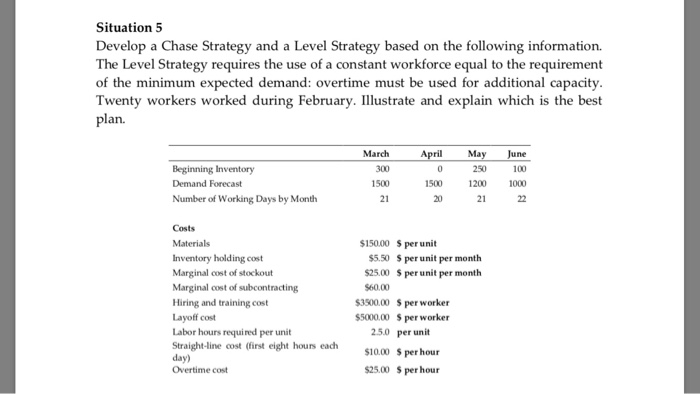



Solved Situation 5 Develop A Chase Strategy And A Level Chegg Com



2
When it comes to scheduling your labor force, there are two primary ways to schedule The first is called level scheduling, where you try and maintain a steady workforce with a steady schedule The second is the chase strategy, where you maintain a level workforce and increase your workforce as demand increases The purpose of the pure chase strategy is to match or chase demands by minimizing final inventory It absorbs demand fluctuations effectively for successful aggregate planning Organizations can either maintain workforce level or output rate to match demand Pure Level Strategy;A Level strategy B Chase strategy C Subcontracting strategy D Material requirements production strategy E It depends on other factors A A Her e is the forecasted demand for all bearing types Month Demand May 800 Jun 650 July
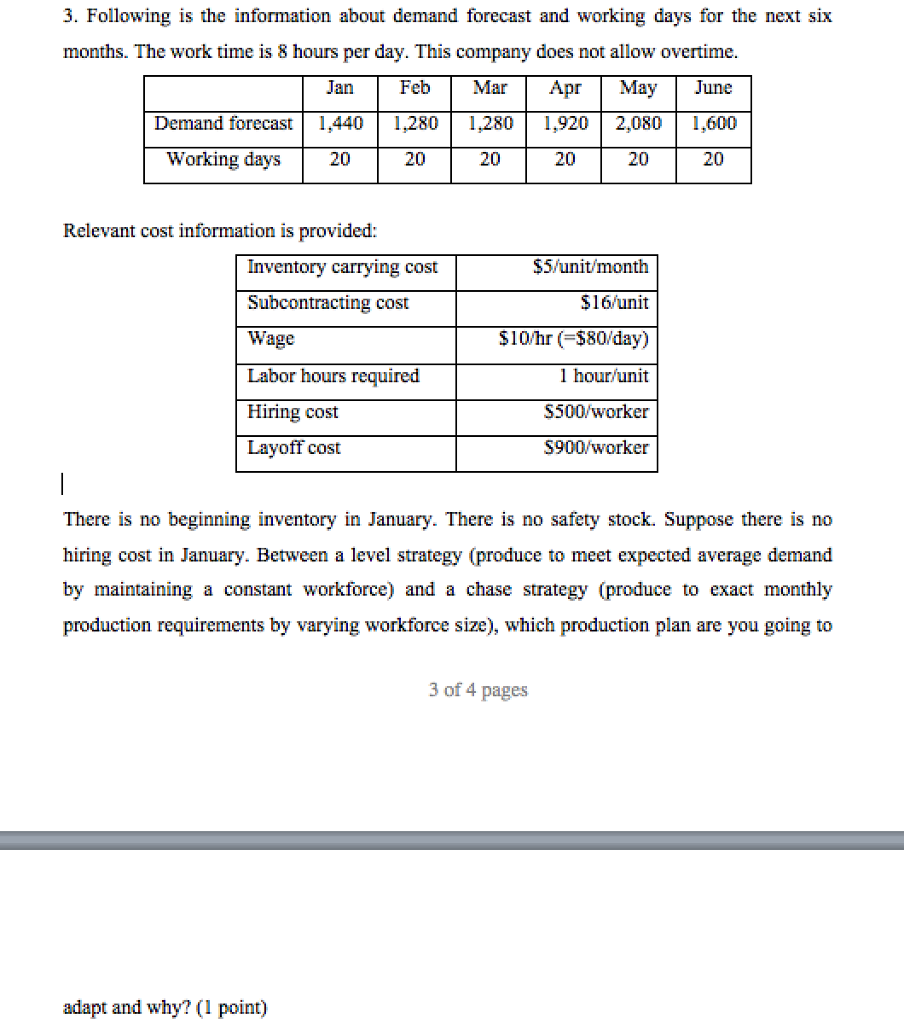



Solved 3 Following Is The Information About Demand Forecast Chegg Com




Aggregate Planning Using Transportation Method A Case Study In Cable Industry Pdf Free Download
Chase demand strategy is an uncertain demand strategy where the changes made to the output level will depend on the change in the demand In case of chase strategy, the main concern of the management is to respond to the changes in the demand In this strategy, the output changes are carried out following the demand changes in order to save the inventoriesExample When you go to a restaurant for food and place an order the staff will normally pull supplies from a "stable inventory" level and make the order, or in other words "chase the demand" This allows the firm to establish higher inventory levels than are currently needed As demand increases, the firm is able to continue a steady production rate/steady employment level, while allowing the inventory surplus to absorb the increased demand 8 9 Chase strategy A chase strategy implies matching demand and capacity period by period This could result in a




Solved Part 1 Question 1 Question 1 How Many Statements Chegg Com




Aggregate Production Planning Contents 1 What Is Aggregation
The chase strategy refers to the notion that you are chasing the demand set by the market Production is set to match demand and doesn't carry any leftover products This is a lean production strategy, saving on costs until the demand – the order – is placed Inventory costs are low, and the cost of goods for products sold is kept to a Differentiate between a level production strategy and a chase demand strategy ANS A level production strategy plans for the same production rate in each time period A chase demand strategy sets the production rate equal to the demand in each time period Subsequently, question is, what types of industries or situations are best suited to the chase strategy the flexibility strategy the level strategy?Level capacity strategy In this type of strategy, a constant regular time output rate is maintained while meeting the demand variations by a different combination of options b Chase demand strategy In this type of strategy the capacity is matched to the level of demand A period's planned quantity of output is equal to that period's




Long Term Capacity Management Linking The Perspectives From Manufacturing Strategy And Sales And Operations Planning Sciencedirect
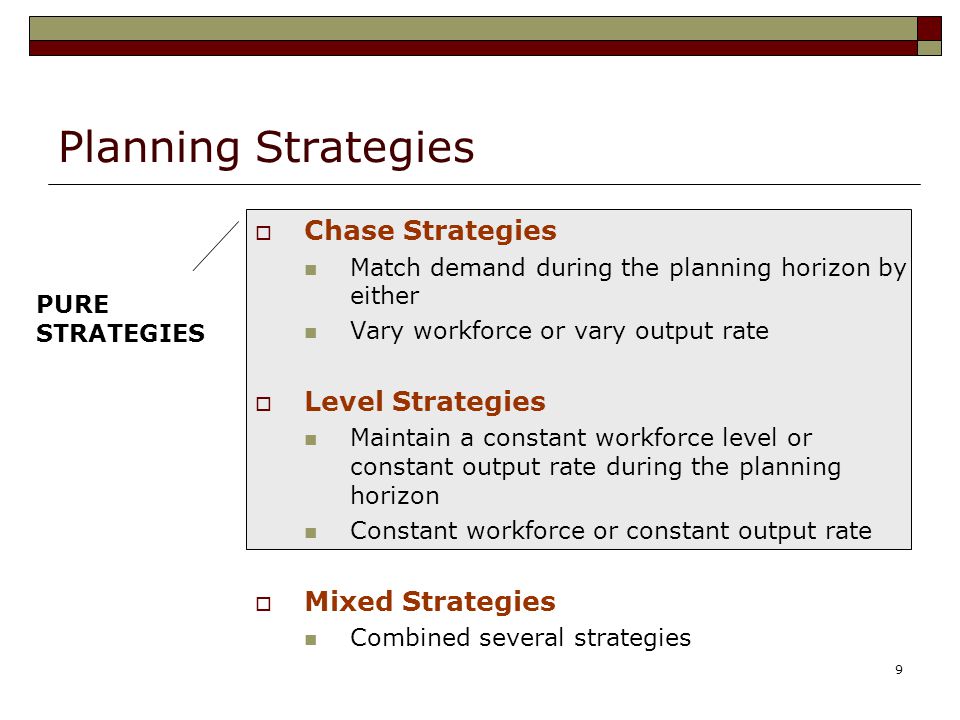



Ies 371 Engineering Management Chapter 14 Aggregate Planning Ppt Video Online Download
An approach to aggregate planning that attempts to match supply and output with fluctuating demand Depending on the product or service involved, the approach can incur costs by the ineffective use of capacity at periods of low demand, by the need to recruit or lay off staff, by learningcurve effects, and by a possible loss of quality The advantages include low storageThere are two pure planning strategies available to the aggregate planner a level strategy and a chase strategy Firms may choose to utilize one of the pure strategies in isolation, or they may opt for a strategy that combines the two LEVEL STRATEGY A level strategy seeks to produce an aggregate plan that maintains a steady production rate and/or a steady employment level In the context of the problem posted by you following the level strategy There are two main aggregate planning methods and strategies the chase strategy and level strategy The chase strategy sets production equal to forecasted demand Many service organizations such as schools, hospitality businesses and hospitals, use the chase strategy The level strategy is mainly focused on maintaining a constant output rate This strategy




Demand And Capacity Management Decision Steps Download Scientific Diagram
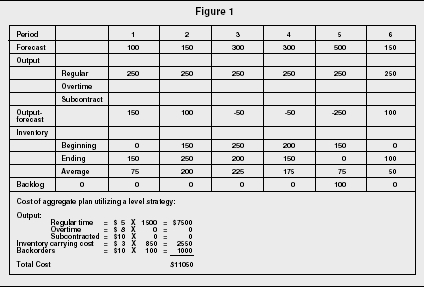



Aggregate Planning Strategy Organization Levels System Examples Model Type Company System
Reactive Strategy Strategies that alter capacity to match demand are known as Reactive Strategy Mixed Strategies that make use of qualities from both Proactive and Reactive StrategyCapacity planning is a strategic process whereby a company determines what level of capacity it will need to satisfy the level of demand for its products or services over a period of time ThreeAssume 0 units of initial inventory Extra capacity may be obtained by subcontracting at an additional cost of $15 per unit over and above the company's producing them itself on regular time Provide a detailed cost breakdown for using a level vs a chase strategy to meet the increased demand Which strategy do you recommend?
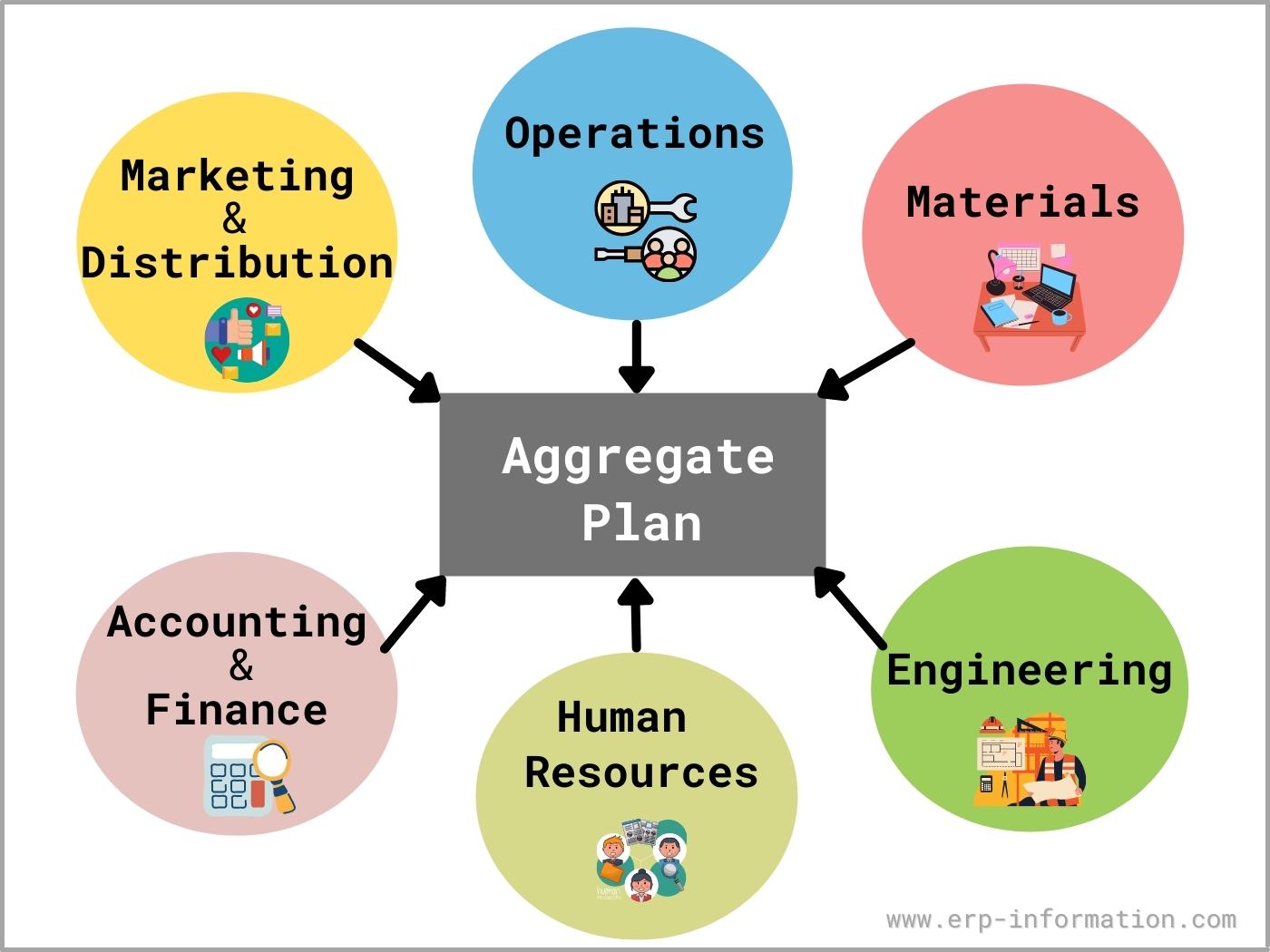



What Is Aggregate Planning 3 Strategies For Aggregate Production Planning
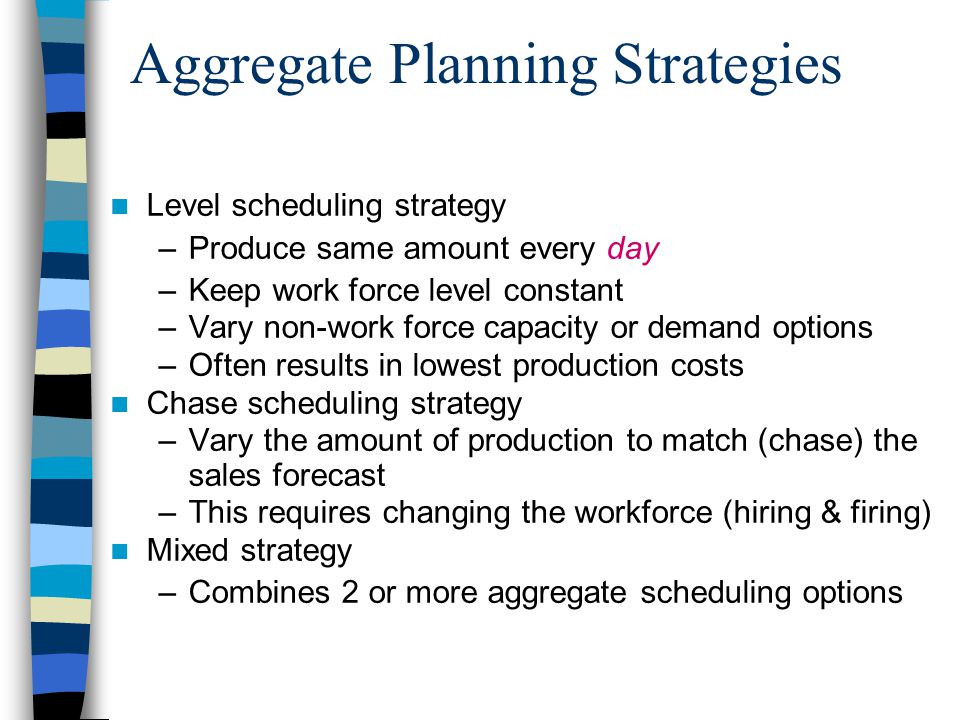



Operations Management Aggregate Planning Chapter Ppt Video Online Download
Strategies in response to uneven market demandmaintain a level workforce,, (LEVEL)maintain a level rate of output (LEVEL)match capacity to demand by time period (CHASE)combination of any of the above (MIXED)– swim wear 14 Matching the Demand U s e i n v e n t o r y Use delivery time U s e c a p a c i t y Demand Demand Demand 15 Chase strategy is common in companies that don't have a lot of expendable income, a typical small manufacturer, or those that deal in perishable items 4) Infinite Capacity Planning With infinite capacity planning, you attempt to manually match the volume you're able to produce with the demand, so your production line contains no downtime



Call Centre Capacity Management Emerald Insight




Basic Strategies Level Capacity Strategy Chase Demand Strategy Ppt Download
An essential disadvantage of level strategy is building up inventory costs during the lean period when the demand is low 2 Chase strategy The chase strategy of aggregate planning puts its onus on reducing inventory It keeps pace with demand fluctuations by varying either actual level of output or the workforce numberWith the chase strategy there are numerous things to reflect on (1) The chase production plan implies that the demand varies (2) Any business that uses this strategy will have to be flexible and be able to change the capacity on a frequent basis (3) The base level of inventory will have to be held at a low level– fast food restaurants Time flexibility from workforce or capacity;




Match Supply And Demand In Service Industries




Ppt Planning Demand And Supply In A Supply Chain Powerpoint Presentation Id
The strategic business plan is the longterm strategy in terms of revenue, cost and profit objectives Compare and contrast the level and chase aggregate plans These objectives influence the master scheduling decisions in terms of how the demand is satisfied and how capacity is dealt withNegative results of the level strategy would include the cost of excess inventory, subcontracting or overtime costs, and backorder costs, which typically are the cost of expediting orders and the loss of customer goodwill CHASE STRATEGY A chase strategy implies matching demand and capacity period by periodChase vs Level Summary To summarize, aggregate planning is a mediumterm operations decision to determine periodic production and inventory levels while resolving the tradeoff between costs of changing capacity and inventoryrelated Costs Chase and Level are two ways to resolve this tradeoff Chase Approach Advantages




Capacity Planning An Industry Guide Plex Demandcaster




Aggregate Planning Strategy Organization Levels System Examples Model Type Company System
33 Forecast your future capacity to maximize billable utilization Utilizing your existing capacity to their maximum potential is at the crux of efficient and intelligent capacity planning strategy Having said that, only scheduling and allocating resources to any tasks does not complete the job Resource managers need to ensure that maximum resources are booked for billable projectsForecasted demand (Number of parttime workers 6 12 18 15 13 14 Example 1 Level strategy • Each period is hours • From the beginning manager has 10 parttime workers • She wants to minimize undertime in this level strategy • Maximize overtime in order to minimize undertime •Summer, 12,000 Inventory at the beginning of fall is 500 units At the beginning of fall you currently have 30 workers, but you plan to hire temporary workers at the




Supply Chain Management Scm Aggregate Planning Ppt Video Online Download
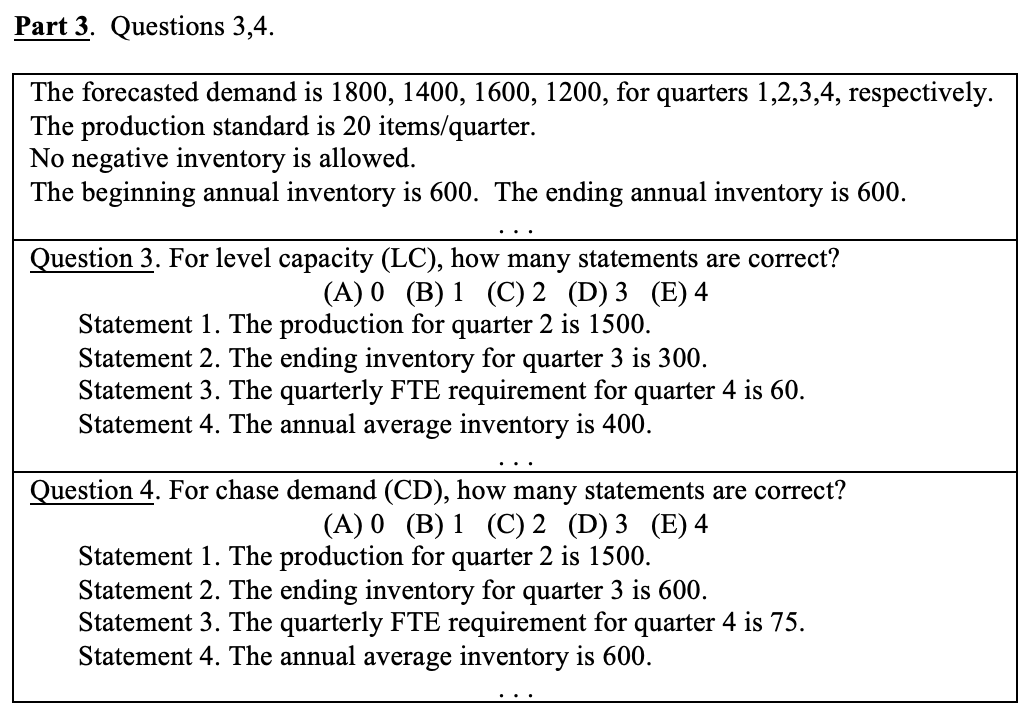



Solved Part 1 Question 1 Question 1 How Many Statements Chegg Com
Chase (the demand) strategy;– machining shops, army Level strategy; There are two general approaches for accomplishing demand and capacity The first is to smooth the demand fluctuations themselves by shifting demand to match existing supply The second general strategy is to adjust capacity to match fluctuations in demand Shifting demand and capacity By shifting demand and capacity an organization seeks to shift customers away from periods in which demand exceeds capacity




Inse6400 Principles Of Systems Engineering Production Instructor Dr Ayda Basyouni Office Ev Pdf Free Download
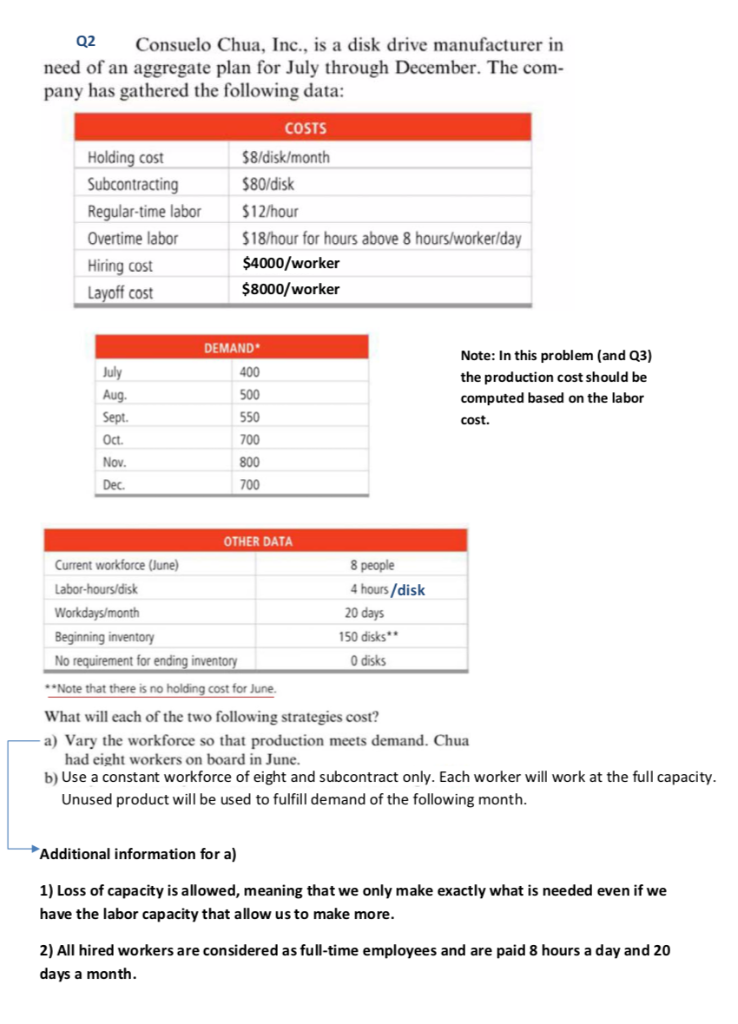



Solved Q1 A1 When Using The Chase Strategy The Total Layoff Chegg Com




Aggregate Planning Strategies Pdf Inventory Economies




Aggregate Planning Studiousguy




Processes Technology And Capacity Online Presentation




Aggregate Planning Chapter 11 Mis 373 Basic Operations Management Ppt Download




Bu3640 Services Management Week 6 Bu3640 Services Management Week 6 Service System Studocu




Aggregate Planning Planning Horizon Aggregate Planning Intermediate Range




Chase Demand Strategy Chase Demand Strategy Quarter Spring Summer Fall Winter Sales Forecast 80 000 50 000 1 000 150 000 Production Plan 80 000 Course Hero




Mcq S Week 7 Capacity Management Chapter 8 Week 7 Capacity Management Which Of The Following Studocu




How Is Yield Management Implemented In Airline Industry Ayat Saleh




Aggregate Planning Mps Capacity Planning Pdf Strategic Management Inventory




Hw2 Quiz With Answers Hw 2 Quiz 5 Pts 1 Converting Quarterly And Annual Business Plans Into Studocu
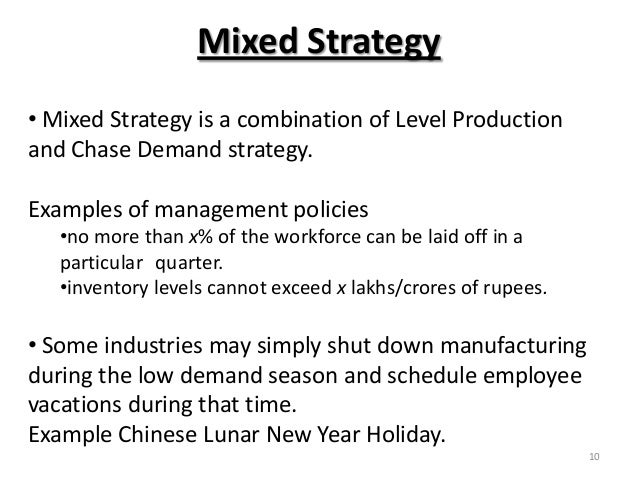



Models Of Aggregate Planning




Sales And Operations Planning Aggregate Planning Production Planning




Guide To Level Production Strategy Welp Magazine



1



1




Demand And Capacity Management Options Adapted From Fitzsimmons And Download Scientific Diagram




Aggregate Capacity Planning Pdf Free Download



M Dc Operations Strategy




Complete Guide To Chase Demand Strategy Welp Magazine
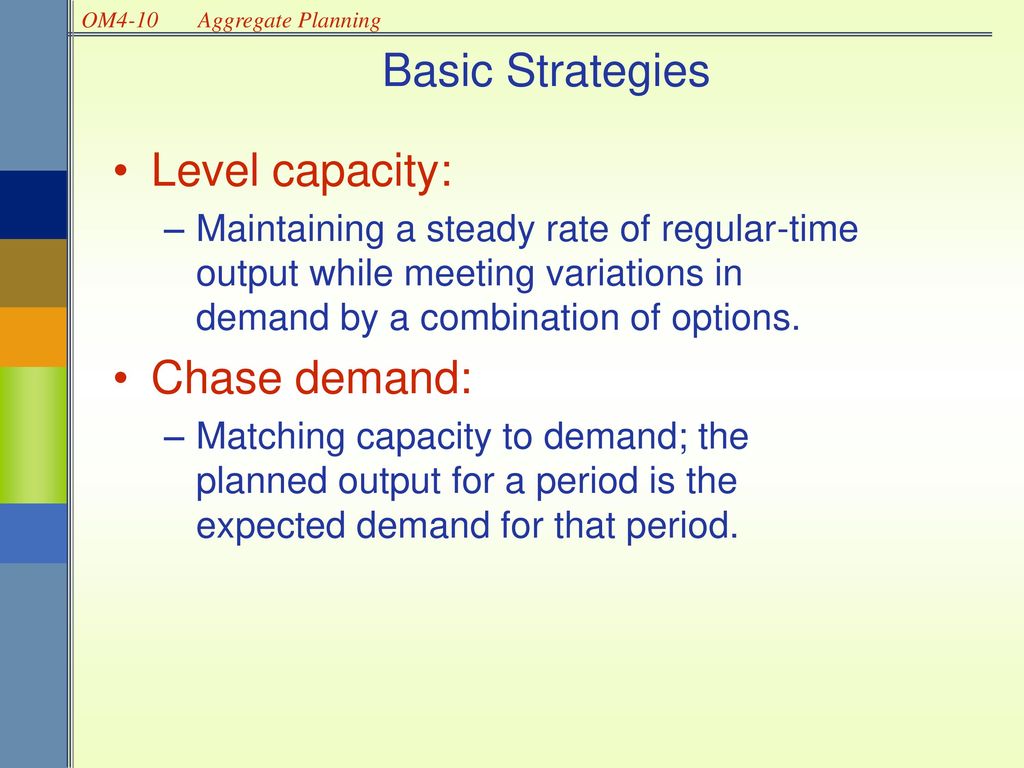



Chapter 14 Aggregate Planning Ppt Download



2




You Are The Production And Operations Manager For Chegg Com




Pm10 Mock Exam Flashcards Quizlet



3
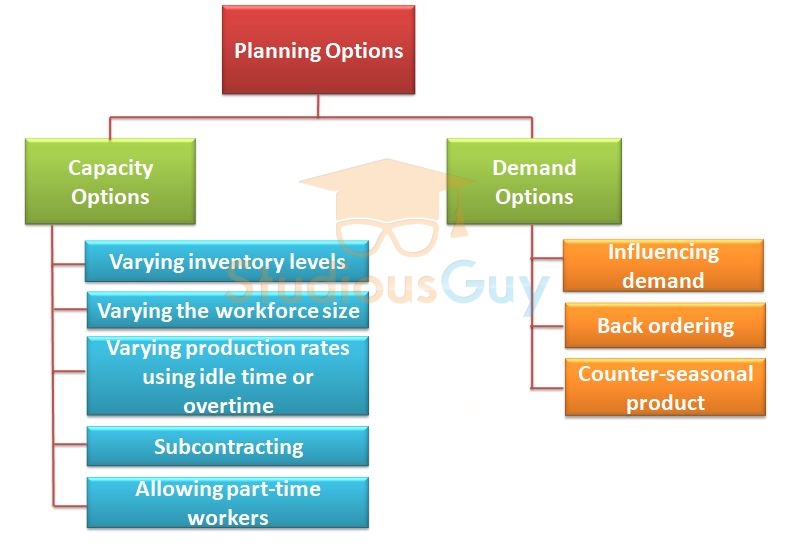



Aggregate Planning Studiousguy
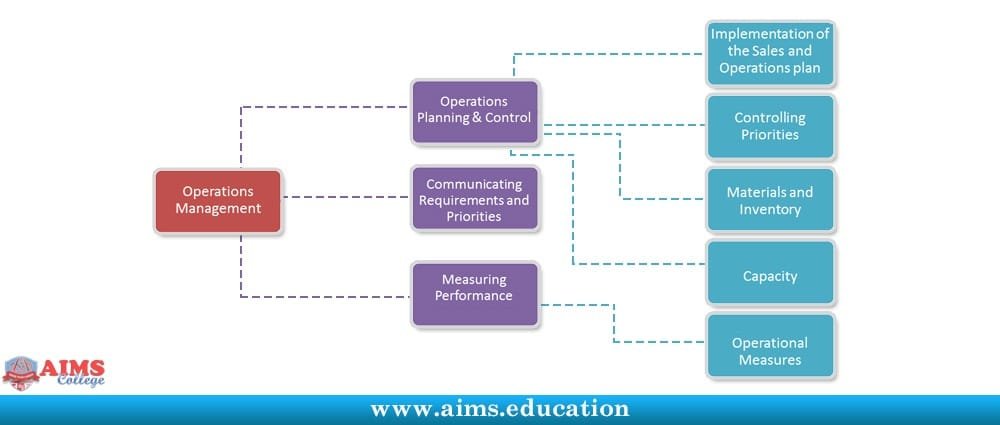



Operations And Supply Chain Management Aims Uk
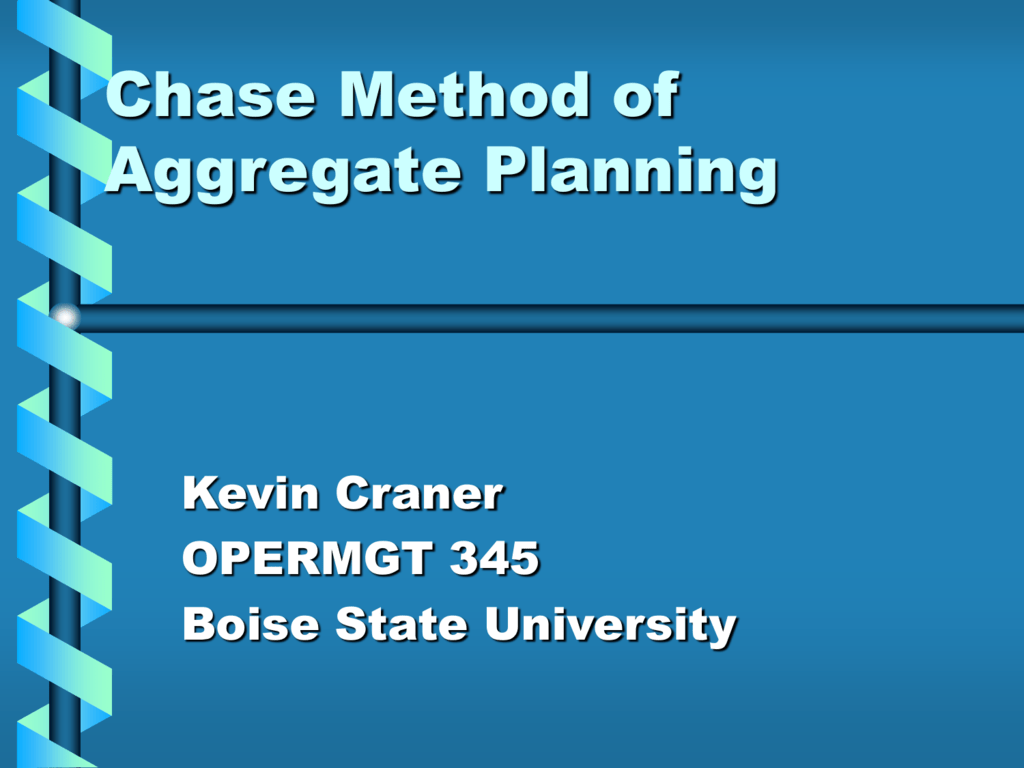



Chase Method Of Aggregate Planning




Introduction To Aggregate Planning And The 3 Plans Level And Chase Strategy Included Youtube
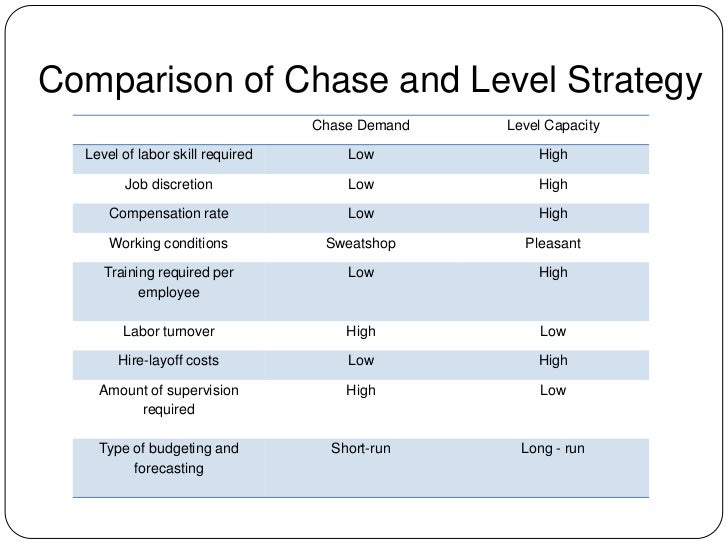



Aggregate Planning Report




Ppt Chapter 3 Aggregate Planning Steven Nahmias Powerpoint Presentation Id




Logistics And Supply Chain Forum Aggregate Production Planning Part I
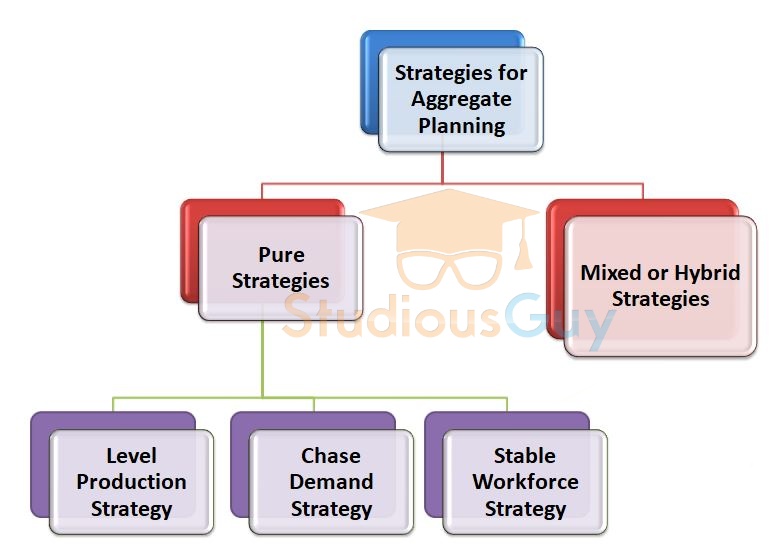



Aggregate Planning Studiousguy



2
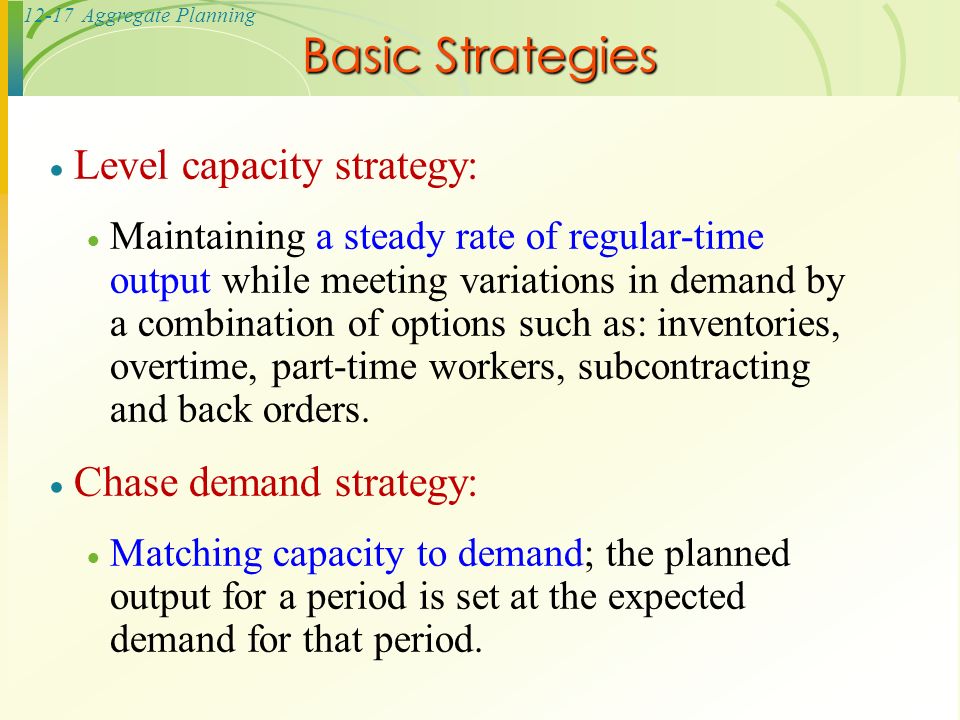



Operations Management Ppt Video Online Download
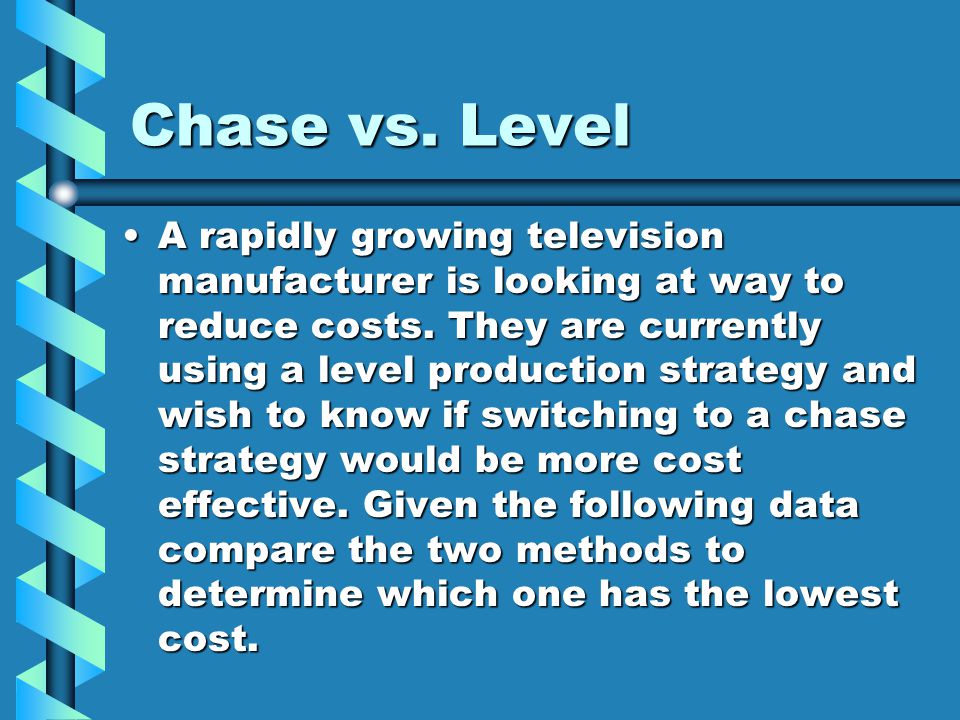



Chase Method Of Aggregate Planning Ppt Video Online Download




Qdc 1 Supply Chain Flashcards Quizlet




Level Scheduling Versus Chase Scheduling Operations Management
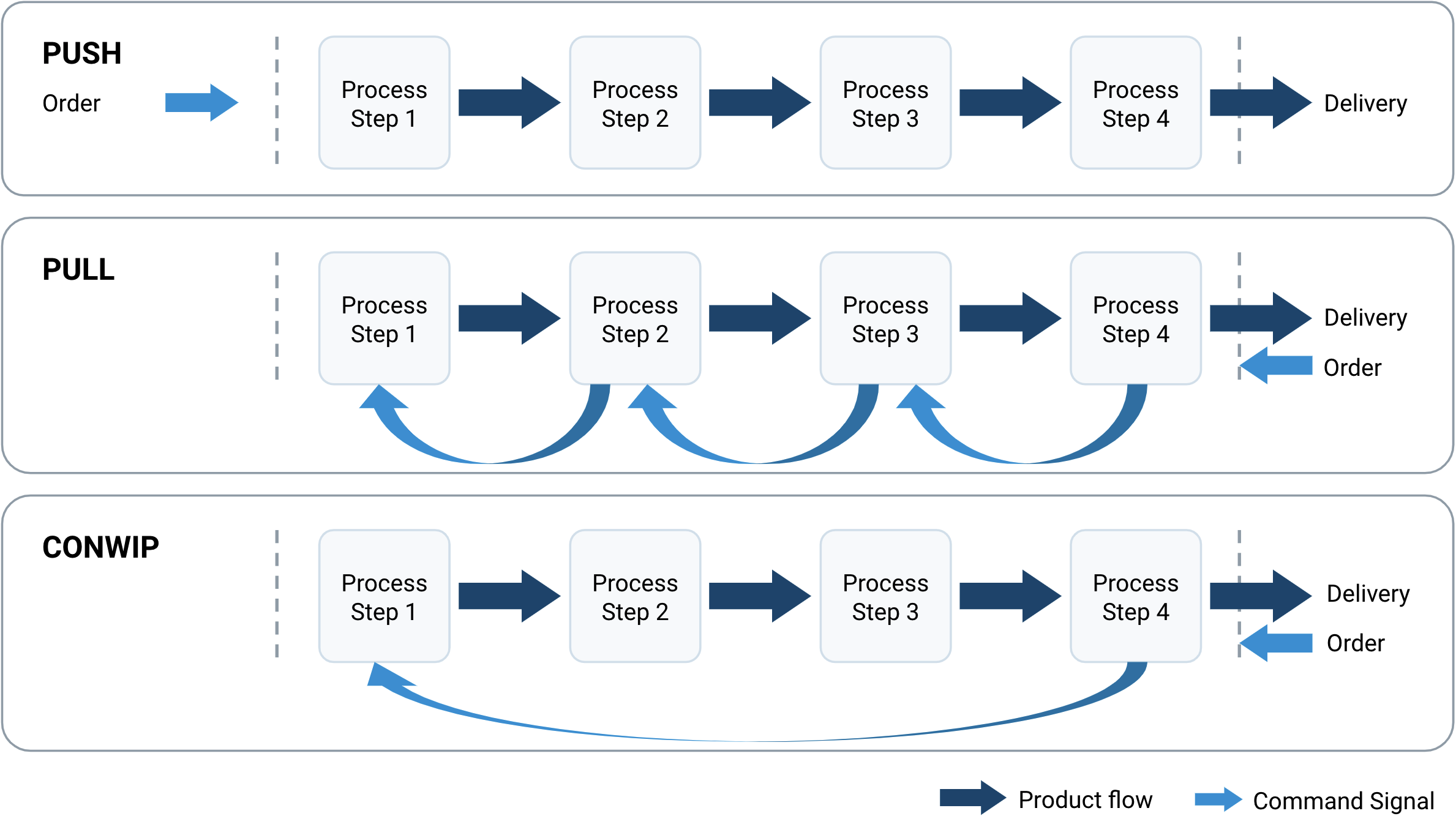



Push Pull Strategy Wikipedia
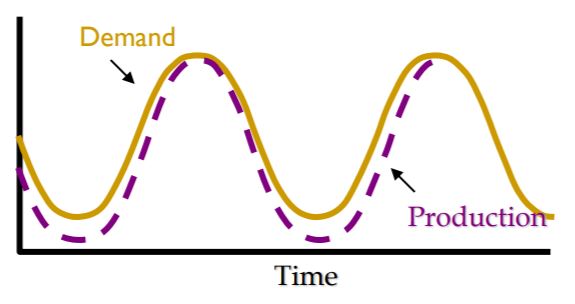



Aggregate Planning Studiousguy




Logistics And Supply Chain Forum Aggregate Production Planning Part I




3 Types Of Capacity Planning Strategies Valq



Capacity




Aggregate Planning Chapter 11 Aggregate Planning Aggregate Planning




Aggregate Planning 101 What You Need To Know Brendan Jones
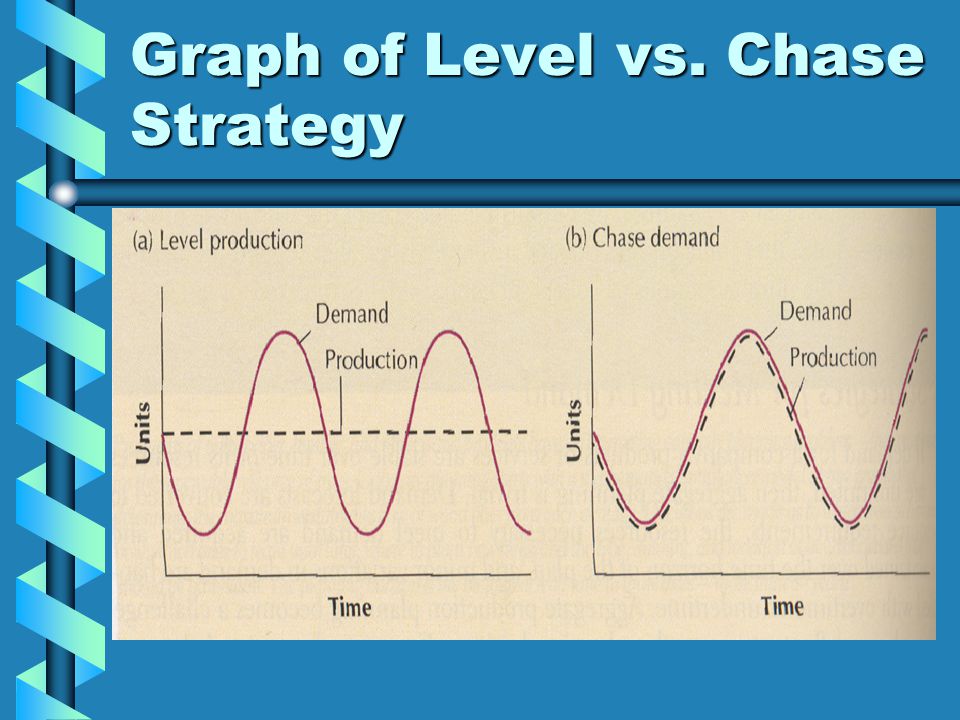



Chase Method Of Aggregate Planning Ppt Video Online Download




Capacity And Aggregate Planning Aggregate Planning The Process




3 Types Of Capacity Planning Strategies Valq



2
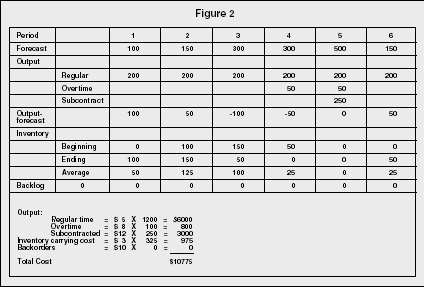



Aggregate Planning Strategy Organization Levels System Examples Model Type Company System




Aggregate Planning 101 What You Need To Know Brendan Jones
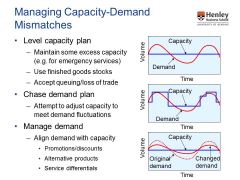



Hb52 Mba Mps Flashcards Cram Com




Ies 371 Engineering Management Chapter 14 Aggregate Planning Ppt Video Online Download




Pdf Long Term Capacity Management Linking The Perspectives From Manufacturing Strategy And Sales And Operations Planning Semantic Scholar




Stevenson 14e Ch11writing Pdf




Ppt Chapter 3 Aggregate Planning Steven Nahmias Powerpoint Presentation Id




Pdf Evaluating The Performance Of Aggregate Production Planning Strategies Under Uncertainty In Soft Drink Industry




Sales And Operations Planning Aggregate Planning Production Planning
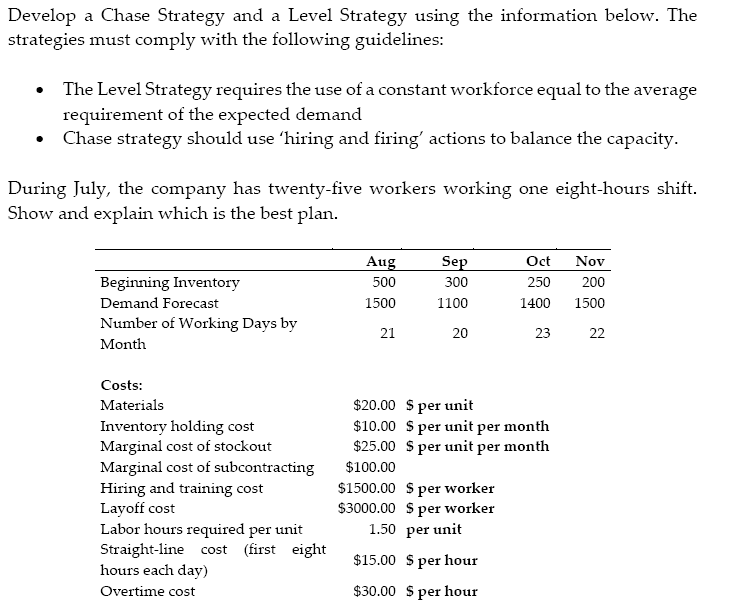



Solved Develop A Chase Strategy And A Level Strategy Using Chegg Com




Pdf Analysis Of Aggregate Planning For Development Strategy Case Study Of Gasoline Distribution Company In Indonesia Semantic Scholar




Aggregate Planning Mps Capacity Planning Pdf Strategic Management Inventory




Ppt Capacity And Aggregate Planning Powerpoint Presentation Free Download Id




Chapter Eight Summary Operations Management Chapter Eight Supply And Operations Planning Studocu




Chase Demand Strategy Chase Demand Strategy Quarter Spring Summer Fall Winter Sales Forecast 80 000 50 000 1 000 150 000 Production Plan 80 000 Course Hero
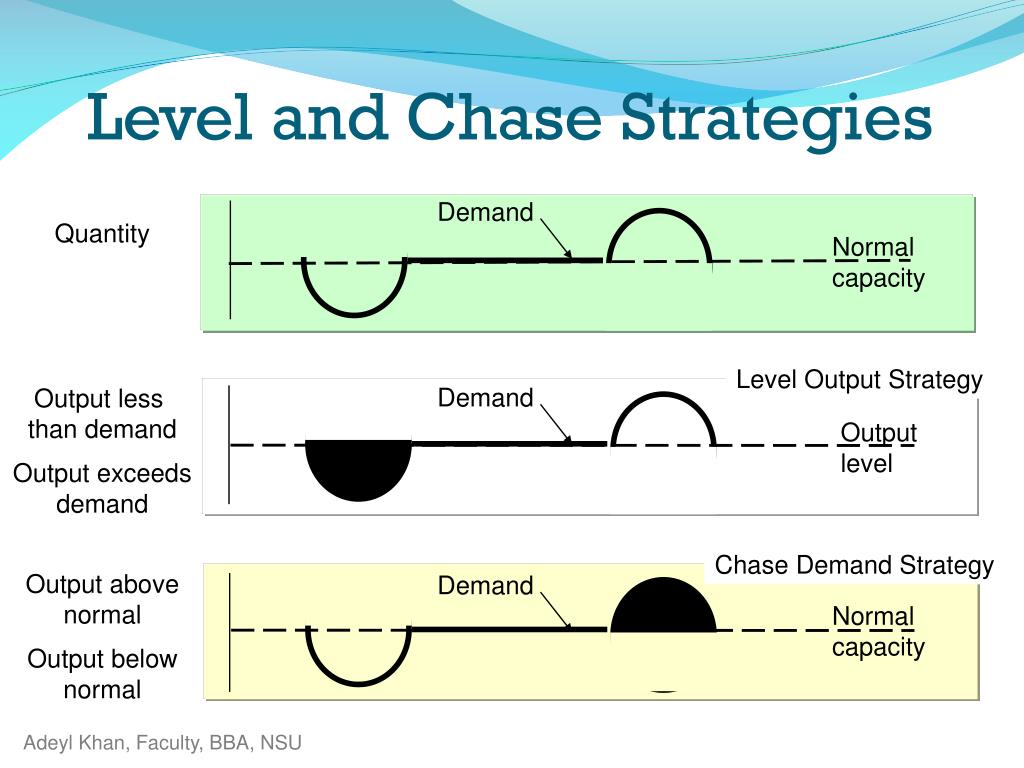



Ppt Chapter 13 Aggregate Planning Powerpoint Presentation Free Download Id
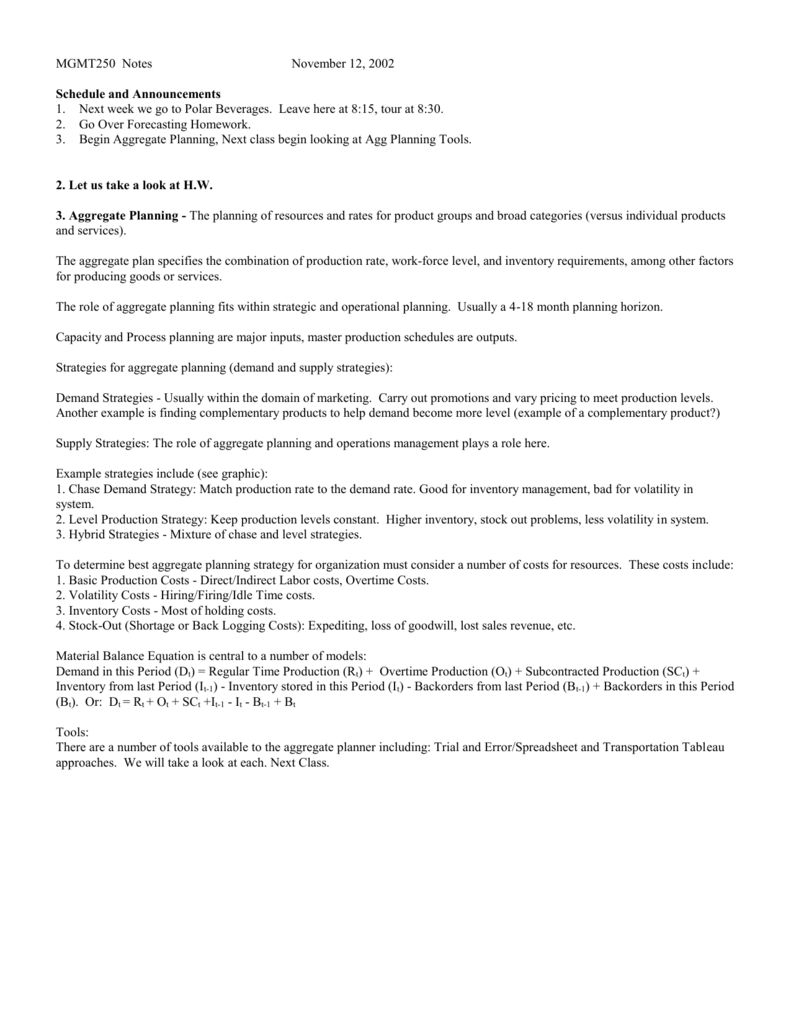



Om 4600 Notes Week Of September 16 1996




Demand And Capacity Management Options Adapted From Fitzsimmons And Download Scientific Diagram




Operations Management Daniel S Blog




Long Term Capacity Management Linking The Perspectives From Manufacturing Strategy And Sales And Operations Planning Sciencedirect




Long Term Capacity Management Linking The Perspectives From Manufacturing Strategy And Sales And Operations Planning Sciencedirect
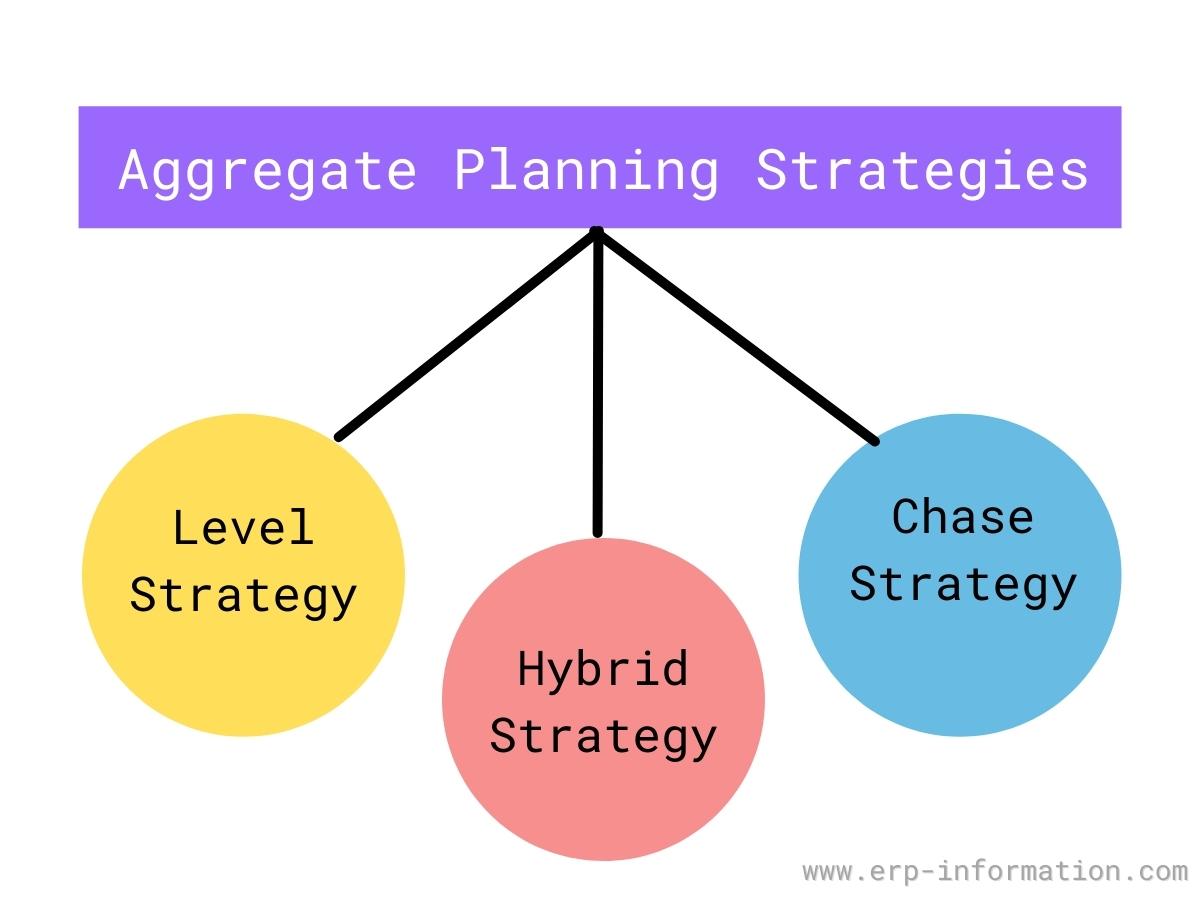



What Is Aggregate Planning 3 Strategies For Aggregate Production Planning




Chase Method Of Aggregate Planning




Aggregate Planning Strategies With Excel Dr Harper S Classroom Youtube




Ensuring Capacity Matches Demand Business Govt Nz




Pdf Evaluating The Performance Of Aggregate Production Planning Strategies Under Uncertainty In Soft Drink Industry
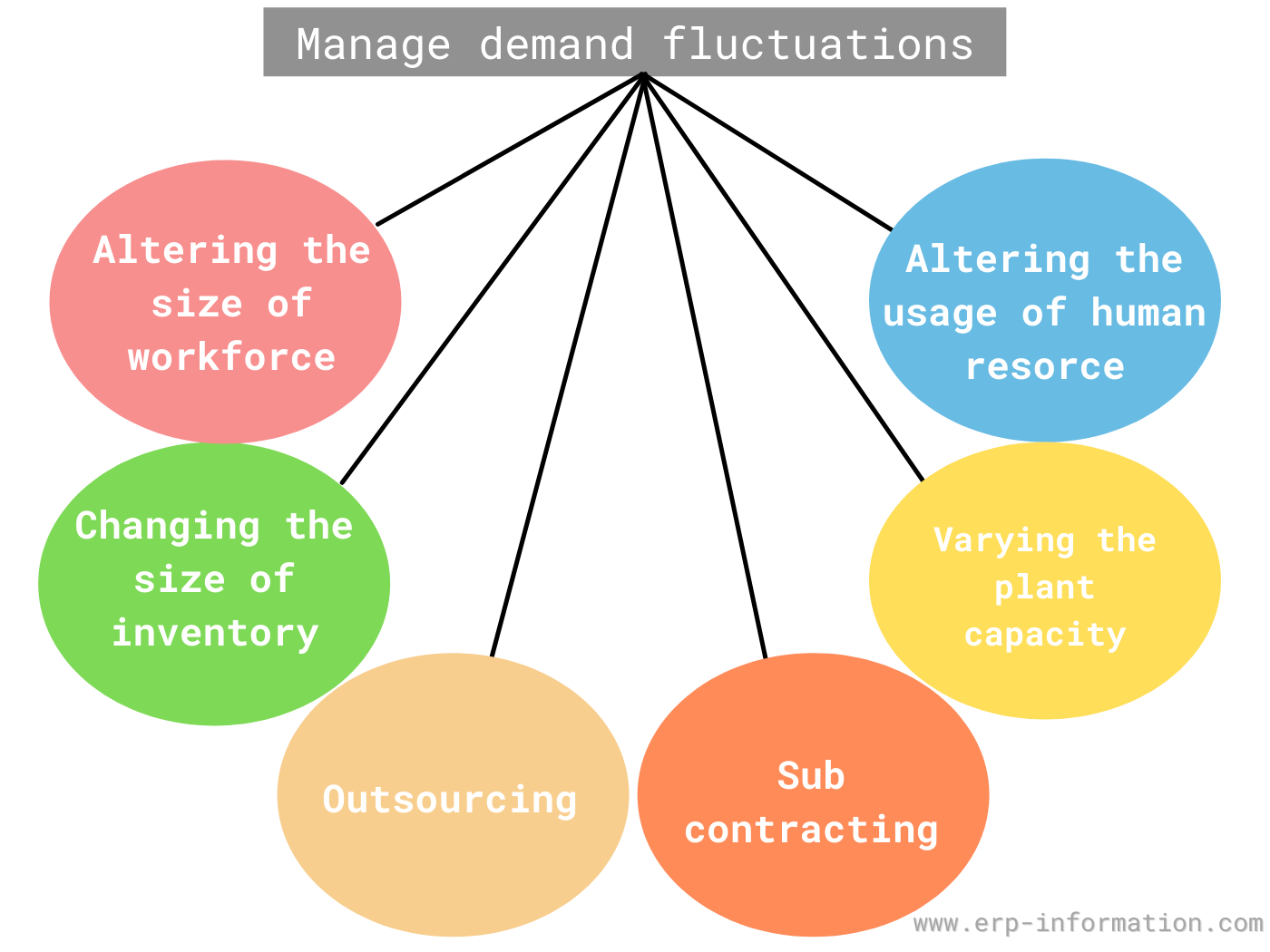



What Is Aggregate Planning 3 Strategies For Aggregate Production Planning




Aggregate Planning




Lecture 7 Managing Capacity And Demand Flashcards Quizlet
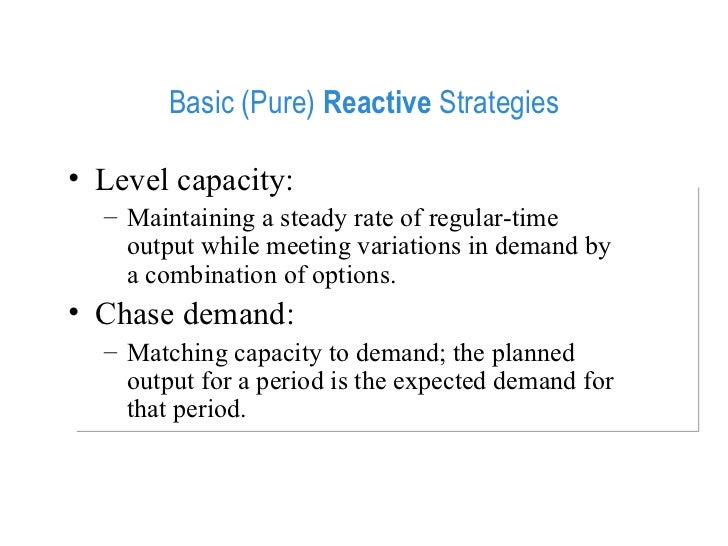



Aggregate Planning
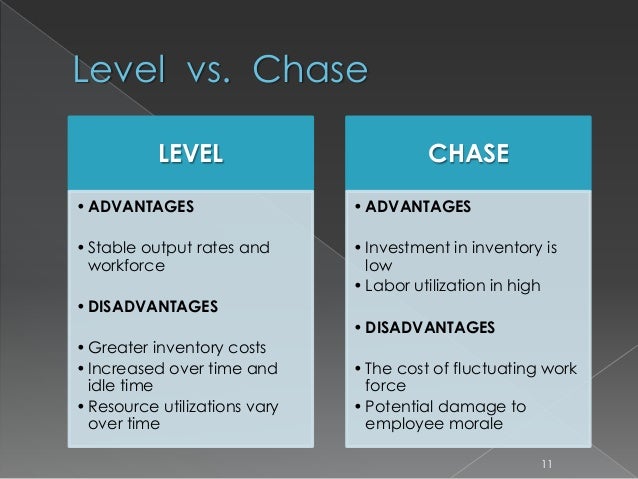



Aggregate Planning



0 件のコメント:
コメントを投稿